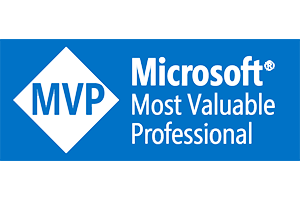Great news, last week Microsoft has released Azure Stack HCI as “General available”. The product is now ready for production use and all the prerequisites on the Microsoft side has been met such as 24/7 support etc. The past few months I talked to a lot of people about Azure Stack HCI and the Windows Server HCI solutions and I can’t stop to notice how people are comparing Azure Stack HCI to Windows Server HCI.
In this blog I will explain my point-of-view on both solutions and how they differentiate.
Hyper-V and Storage Spaces Direct
Microsoft is heavily invested in Hyper-V from the early days, even before Microsoft Azure. Virtualization is one of the technologies that have disrupted the way we do IT. Microsoft has always been the underdog, competitor VMware had a far bigger market share for many different reasons. With innovation of storage virtualization, translating into Hyper-Converged Infrastructure solutions, Microsoft saw the opportunity to release an HCI solution of their own which has been developed into Windows Server making use of ‘Hyper-V’, ‘Storage Spaces Direct’ and ‘Software-defined Networking’. The battle of the HCI solutions began where Microsoft, VMware and Nutanix are the innovators, many other solutions in the Gartner Magic quadrant fell off in the latest release because their inability of offering a hardware vendor independent solution.
Big adoption of ‘Azure Stack HCI’
The HCI solution from Microsoft had a big adoption rate in the first year and this trend continued when Windows Server 2019 was released. To make sure customers had a solid experience a validation program was brought to life called ‘Azure Stack HCI’. Hardware vendors had to go through a series of tests to being allowed to sell it as the Microsoft HCI solution.
Please note that the validation program for Windows Server 2019 was called ‘Azure Stack HCI’, not to confuse with the new product with the same name. I know, I didn’t make it up.
Hybrid Cloud
The intentions of Microsoft are clear for years already, they want to bring Microsoft Azure services to customers’ datacenter. Azure Stack Hub was introduced and is the platform that can run those services in a robust way, providing an Azure platform in your datacenter. Azure Stack Hub is a great solution, but Hub is not for everyone. The footprint is big, for some functionality it still relies on Azure or 3rd party integrations. The infrastructure is closed which brings in challenges with integrating in your current operating model. Think about Backup, DR and monitoring.
The HCI solution on Windows Server did provide some unique capabilities that Hub couldn’t match. It also could connect and make use of Azure services which allowed it to be called a ‘Hybrid Cloud Solution’, but is it a true hybrid cloud solution?
Windows Server, the Monster.
Windows Server is a swiss army knife that offers many different features and roles, which is great, but also has some downsides. Although the HCI solution was very successful, Microsoft needed something different to not just provide a virtual machine platform on-premises that connects to Azure services. There was a need for an on-premises system that has a tighter connection with the cloud, has a different release cadence so that updates and features arrive faster and is specifically built to run Azure services. These needs do not match with Windows Server. Period.
The only way to accomplish this was to create a new product and operating system running on it. This way the product teams get more flexibility and agility, but it moves away from Windows Server.
Azure Stack HCI
And now, this new solution is general available.
New product, enabling to run Azure services in your own location, which also includes virtual machines. Managed from Microsoft Azure. The underlying infrastructure technology of Azure Stack HCI is based on the innovation that happened in Windows Server which proved to be stable and robust the last few years. As it’s not a Windows Server product but an Azure product, making use of it means a monthly price that you pay through Azure billing. It also means that you get benefits that you could never get on Windows Server such as;
- Run Azure Services in your own datacenter (This was only supported on Azure Stack Hub)
- Faster feature updates (at least yearly updates instead of 1 time every 3 years)
- Advanced Support included (No need for Unified / Premier support contracts)
- Product updates (No need to buy a new version of Windows Server every x years)
- Integration with Microsoft Azure using Azure Arc (Use cloud native services, out of the box)
Building on a new OS without the delaying factors of Windows Server already brought some cool innovations such as;
- Kernel Soft Reboot (video)
- Intent Driven Networking (video)
- GPU Partitioning (video)
- Stretched Clustering
- Faster repairs
Azure Stack HCI is expensive
Azure Stack HCI is more expensive as a VM-hosting platform on Windows Server, where you primarily run Windows VMs (and need Windows Server Datacenter licensing). This was a nice edge on competitors in the virtualization ecosystem. The goal of Azure Stack HCI is not to be your ultimate VM-hosting or virtualization platform. It’s a new product, enabling to run Azure services in your own location, which also includes virtual machines. If you only run VMs that are not subject to Windows licensing, you pay $10 per core per month and get all the benefits listed above! In other words, you get an HCI platform in your datacenter which is able to run supported Azure Services with Microsoft support and updates included. Not really comparable with Windows Server in many ways.
—
Thanks for reading my blog!
Follow me on Twitter
Darryl van der Peijl


